The Amatriciana sauce (matriciana in Roman dialect) is an ancient and delicious condiment that always gains great success.
Like every ancient recipe, everyone has their version, but the true original Amatriciana recipe with all its simple secrets, includes the following ingredients:
1) strictly aged Guanciale (NO pancetta) cut into strips (NO cubes). The difference between guanciale and pancetta is fundamental: guanciale is much fattier than pancetta but also more aromatic and flavorful. When cooked, the fat melts, giving flavor to the Amatriciana, and does not become dry like pancetta;
2) Fresh San Marzano Tomatoes, previously blanched, peeled, seeded, and cut into fillets, but quality peeled tomatoes are also fine (NO tomato puree or pulp);
3) Aged Pecorino (NO parmesan);
4) NO onion and garlic (but I add it);
5) Spaghetti (but I prefer bucatini);
6) Chili pepper, a splash of white wine, if possible, all should be prepared in an iron pan (or aluminum).
Amatriciana is such a delicious and tasty ancient sauce that it is famous worldwide, also for its simplicity in execution, it always gains great success.
If you love first courses, including the great classic sauces like Ragù, Genovese, Bolognese, etc., you can find them all in the Section of my Blog, dedicated to “First Courses“.
If you are looking for other easy and quick recipes (sweet or savory), click on my Special: “Easy and Quick Recipes“.
If you’re looking for Top recipes like this, super tested and sure to succeed, click on the Special: “My TOP Recipes“.
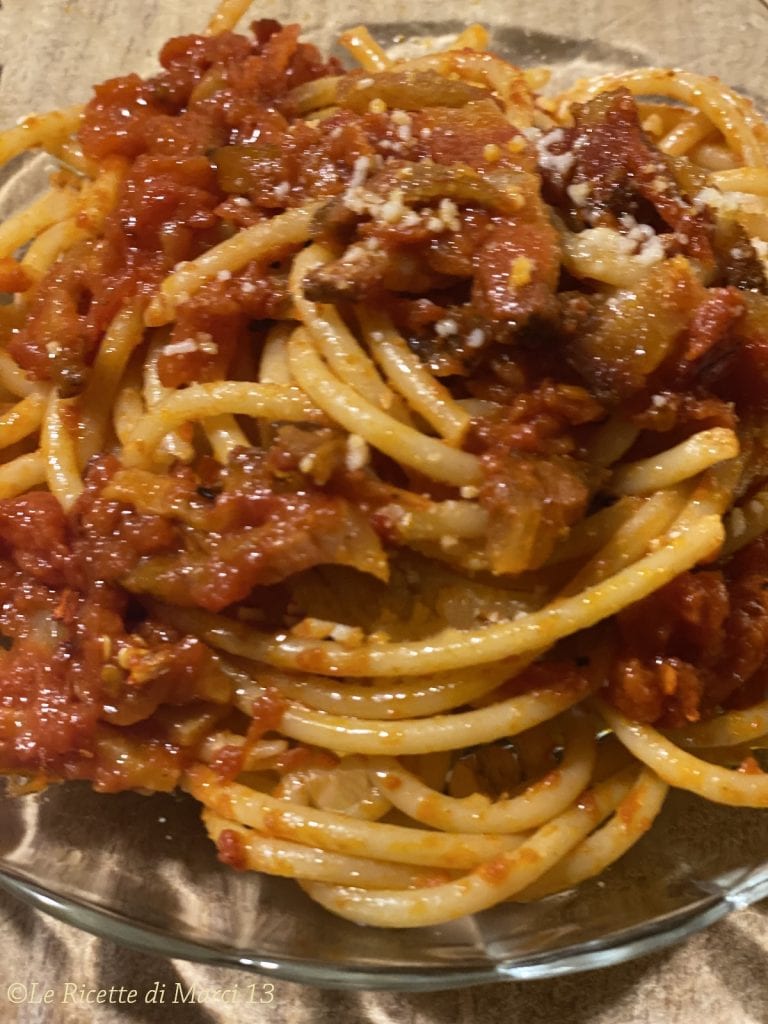
- Difficulty: Very easy
- Cost: Very cheap
- Preparation time: 10 Minutes
- Portions: 5
- Cooking methods: Stove
- Cuisine: Italian
- Seasonality: All seasons
Ingredients for Bucatini all’Amatriciana
- 18 oz bucatini (or spaghetti)
- 4 oz guanciale
- 2 tsp extra virgin olive oil (optional)
- chili pepper
- Half small glass dry white wine
- 1 garlic (optional)
- 14 oz canned tomatoes (or 6-7 San Marzano tomatoes)
- 3 oz Pecorino Romano
- to taste salt
- to taste black pepper (optional)
Tools
- Bowl
- Cutting board with two side trays, oven safe
- Mezzaluna sharp with double blade
- Knife
- Pot
- Iron pan
Steps for Bucatini all’Amatriciana
Remove the rind from the guanciale and slice it into strips. Take an iron pan (or aluminum), pour in 2 tsp of extra virgin olive oil (optional), garlic (optional), and chili pepper, let the garlic brown, then add the guanciale strips and cook over medium-low heat for a few minutes, allowing it to release its fat and become crispy.
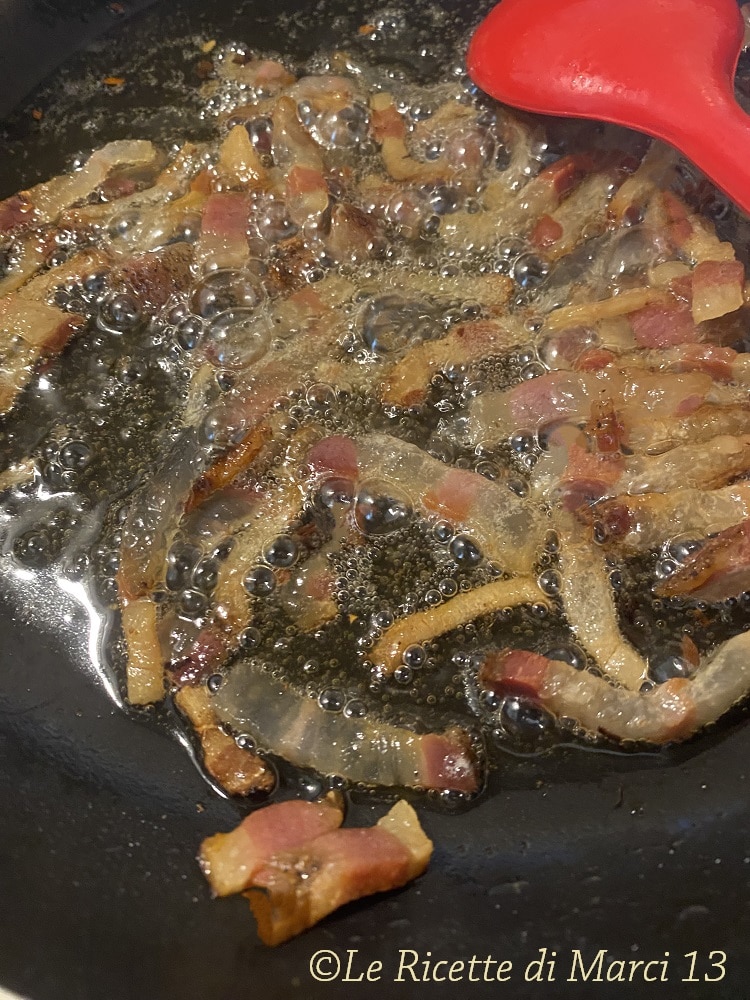
Deglaze the pan with a little dry white wine, then remove the pieces of guanciale, drain well and keep them warm to avoid them becoming too dry.
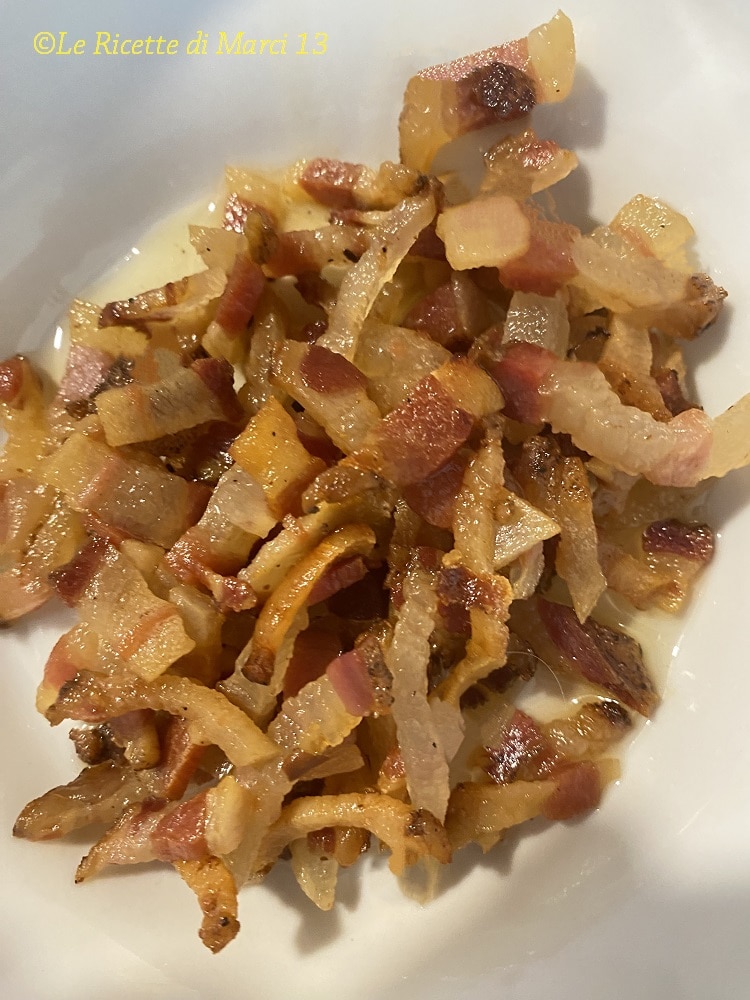
Add the peeled tomatoes to the same pan where the guanciale fat remains, mash them with a fork, then cook first on high heat, then over medium-low heat, adjusting the salt.
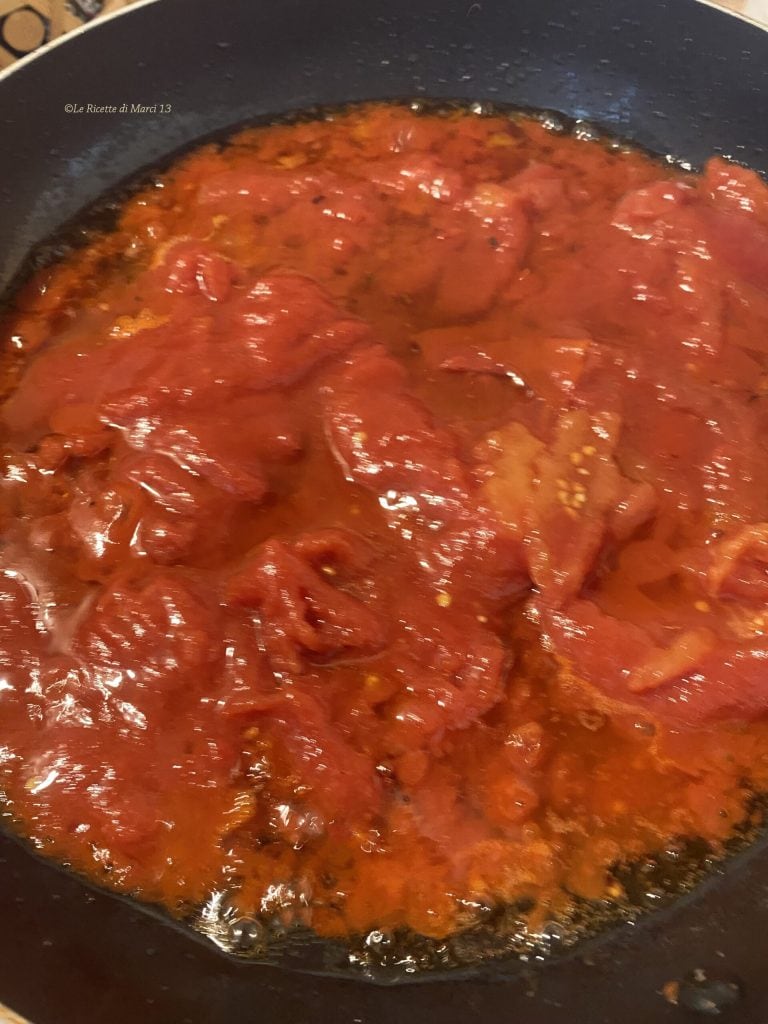
The sauce should thicken well, it will take about 15 minutes.
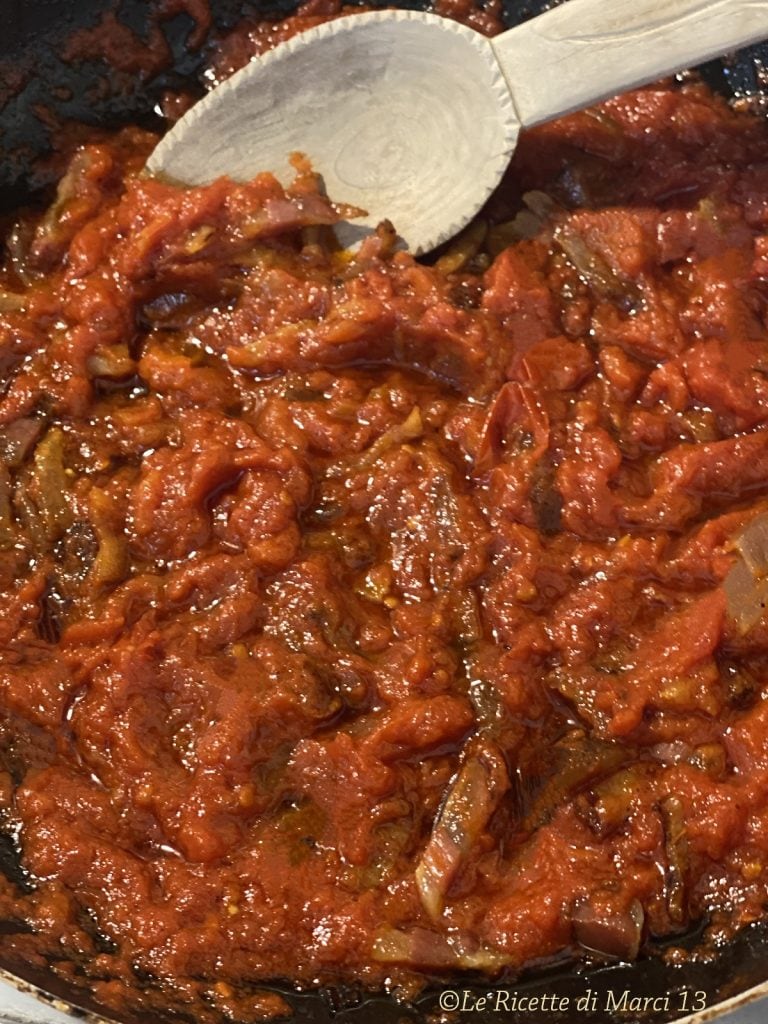
Once the sauce is cooked, put the pieces of guanciale back in, give the sauce another stir.
Meanwhile, boil the bucatini, very al dente, in plenty of salted water (keep a small ladle of cooking water) then transfer them to the pan with the sauce and toss with a small ladle of pasta cooking water.
Off the heat, add the grated Pecorino and season with freshly ground black pepper to taste (optional).
Mix well and serve immediately, completing your Amatriciana pasta with more grated Pecorino.

NOTES and Tips
If instead of peeled tomatoes, you use fresh San Marzano tomatoes, first blanch them for a few moments in boiling salted water, drain them and cool them under running water. After peeling them, remove the seeds and cut them into fillets.
Shopping Tips!!!
To cook Amatriciana, it’s almost essential to use an iron pan like this one you find on Amazon, in various sizes, at a great quality/price ratio, by clicking here.
For slicing bacon and vegetables, I used this handy chopping board with side trays (one for the sliced food, the other for scraps) and thisvery sharp double-blade mezzaluna.
FAQ (Questions and Answers)
Origins and history of the Amatriciana sauce
The Amatriciana sauce (matriciana in Roman dialect) is an ancient condiment, which some mistakenly attribute to Roman cuisine, forgetting that originally Amatrice was part of the province of L’Aquila, therefore, Amatriciana is not precisely a Roman cuisine recipe. It was the shepherds, with the seasonal transhumance movements towards the Roman countryside, who introduced this recipe to the capital. The transhumance forced the shepherds to stay away from home for at least 4 months, so they brought easily and long-lasting preserved products for their sustenance, such as guanciale, Pecorino, and flour. The original recipe is white and without tomato, also called Gricia. The introduction of tomato into the recipe happened later, around the end of the 1700s, when the Neapolitans, among the first in Europe, recognized the great organoleptic qualities of tomatoes, and thus the people of Amatrice, whose territory fell within the Kingdom of Naples, had the chance to appreciate it, and with happy intuition, they added it to the original recipe (see production regulations).


